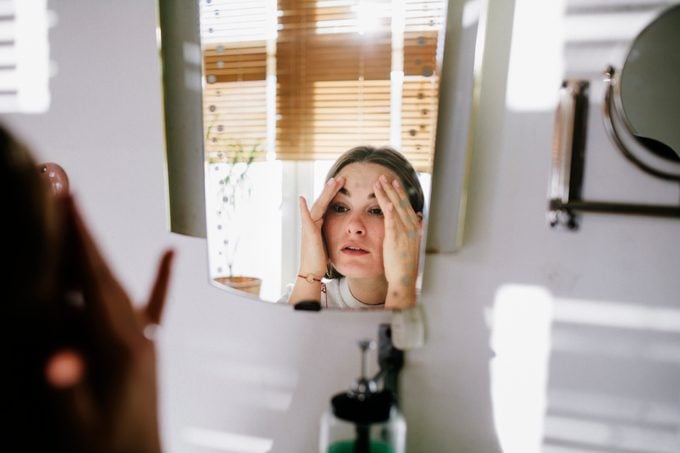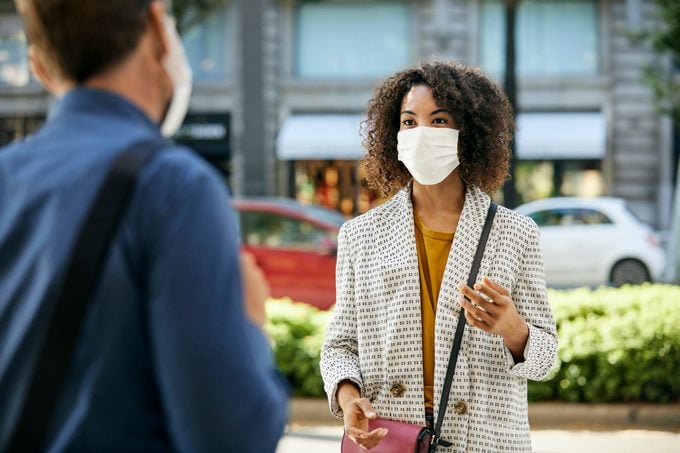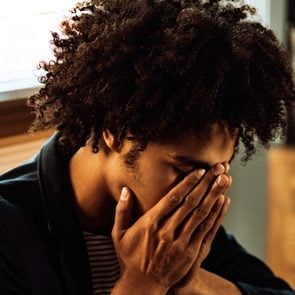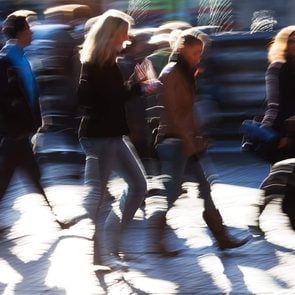Is Covid-19 Giving You Agoraphobia?
Updated: Mar. 16, 2022
Being out in crowds and leaving the safe space of your home may be triggering your anxiety. Here's why Covid-19 can exacerbate agoraphobia for some people.
How Covid-19 can make agoraphobia worse
Since the Covid-19 pandemic hit the U.S. in early 2020, a lot of things have changed. In general, people are spending more time at home, either because they have to quarantine, they want to reduce the risk of Covid-19 transmission, or they have lost their livelihood and are unemployed. It’s hard to look at a group of people who aren’t wearing face masks and not think—is that really safe?
While the mental health impact of this isolation can vary, the impact on people who already have anxiety or some level of fear of crowds or interacting with others is undeniable.
“The isolation of the Covid-19 pandemic is certainly reinforcing anxiety for people who suffer from agoraphobia, separation anxiety, or social anxiety,” says Jenny Yip, PsyD, a board-certified clinical psychologist and clinical assistant professor of psychiatry at the University of Southern California Keck School of Medicine in Los Angeles.
Agoraphobia is a type of anxiety disorder in which you fear and avoid places or situations you feel you can’t escape from. They tend to involve crowds, like shopping malls or public transportation, according to the Anxiety and Depression Association of America (ADAA). Agoraphobia often goes hand in hand with panic disorder.
Some people may feel increasing anxiety leaving the house. But there are also those whose anxiety is triggered by staying at home, as a distraction-free environment breeds rumination that can take you to a negative place, Yip says. Either way, these are stressful times.
 The effects of the lockdown
The effects of the lockdown
The longer the pandemic goes on, the more of an impact it will have on people who are uncomfortable leaving home, says Carole Lieberman, MD, MPH, a board-certified psychiatrist in Beverly Hills, California.
“We’ve been told for many months that it’s dangerous to go anywhere where there might be other people, like the grocery store or church,” she says. So the threats seem even greater.
Most people have adjusted their lives and gotten into the habit of spending more time at home. This includes working from home, which conditions us to be comfortable inside nearly all day, every day.
“When we peep outside, it can seem like it takes a lot more energy to actually go out and do things,” says Dr. Lieberman.
 “People skills” are suffering
“People skills” are suffering
Going out and interacting with others is a muscle you have to exercise, says Dr. Lieberman.
Thanks to social distancing, hesitation about how to interact with others when wearing a mask, and just general fatigue, our “socialization skills aren’t as good as they were,” she says.
How to treat agoraphobia during a pandemic
The evidence-based treatment for an anxiety disorder is what’s known as exposure therapy, says Yip.
A form of cognitive behavioral therapy, it involves repeated exposure to the situations you fear. Avoiding them only reinforces the fear. So facing them head on provides your brain the opportunity to learn and discover that your fear is out of proportion or irrational. Facing or overcoming fears also gives you a confidence boost.
This may seem tricky in a pandemic—after all, shouldn’t you avoid going out and interacting with people? You still need to live your life. But be careful to take the necessary steps to sanitize properly, wear a mask, and practice social distancing, says Yip.
Small steps make a big impact
Make a plan for when you’ll leave home and what you’ll do. That doesn’t mean going to a bowling alley or heading to grocery shop in-store if you’re not comfortable—especially if you live in an area with a rising caseload.
Rather, Yip suggests making it a habit to go out several times a week. Preferably, something like taking a walk outside, as the combination of nature, sunlight, and physical activity triggers “happy hormones” such as endorphins and dopamine. That will reinforce the notion that, yes, it’s good to be out, she explains.
Zoom burnout is real, but keep those social skills strong by checking in with a friend, relative, or loved one each day.
“Even if you think you don’t need it for yourself, think of this exercise as supporting them,” says Dr. Lieberman.
(Here are some tips for dealing with post-pandemic anxiety and the “new normal.”)
When to seek help
The pandemic has really leveled the playing field. Right now, it seems as if all of your anxieties and fears are normal and justified. And that can make you think you shouldn’t seek help since pretty much everyone is fearful about going out.
But ask yourself: How much is your anxiety and worry interfering with your functioning? For instance, offers Yip:
- When you step out of the house, you immediately want to head back in to safety.
- Your anxiety is spilling over and affecting interactions with family members.
- You’re constantly checking news and social media for negative news.
If these things resonate with you, it’s time to seek help. The fortunate news is that clinicians are practicing telehealth, meaning you can feel comfortable starting therapy. Yip recommends going to ADAA’s directory to find a listing of mental health professionals in your area.

















